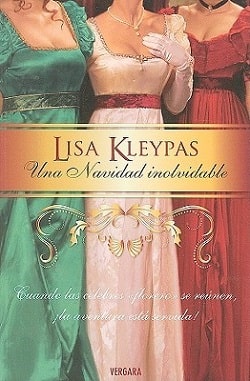Page 50 of Death at a Highland Wedding
When it comes to spinal injuries, I can presume doctors realized that injuring different areas of the spine had different effects, and the higher the injury, the worse those effects. To properly study what parts produce what injuries…
I’m not going to think about what they would have needed to do with animals, but I understand the need for it. Those experiments having been conducted, doctors like Gray now understand how those injuries will manifest, and that is critical knowledge, however it came about.
Gray continues, “A fracture at this level can separate the brain from the rest of the body. Without the brain to regulate the body…”
“The organs aren’t getting any signals and stop working. The lungs don’t take in oxygen. The heart doesn’t beat.”
“Yes. Ezra mercifully appears to have lost consciousness from the blow, the impact sudden enough that it might explain his eyes remaining open.”
Mercifully, because otherwise, he’d have been alive and fully paralyzed as his body shut down.
“That is my initial theory,” Gray says. “Now we need to confirm it, as best we are able.”
Confirming that means cutting into Sinclair’s neck to examine the spine. Gray conducts the internal examination, which confirms separation at the C1 vertebra.
In the end, I don’t get to watch Gray perform a full autopsy, because it isn’t necessary. We know what killed Ezra Sinclair, and anything more would be an unnecessary intrusion.
SEVENTEEN
Once the postmortem is complete, we need to wrap Sinclair’s body and take it back to the estate. There’s nothing else we can do with it. A city like Edinburgh has a morgue, but towns and villages do not.
In my time, the body would be transported to an undertaker, but when I first told Gray that, he’d been baffled. What would an undertaker do with the body? In that capacity, Gray has nothing to do with the dead themselves. He just makes the arrangements for the funeral and burial.
Bodies are often kept in the house of the deceased, where the women in the family will tend to it before burial. That burial will come as soon as possible because… Well, as comfortable as Victorians may be with their dead relatives, they don’t want them in the house after they get too far down the path to decomposition.
With Sinclair being a murder victim, Gray won’t want him buried any sooner than necessary. Lacking the proper storage facilities, though, all he can do is wrap the corpse tightly and keep him at the estate.
Simon and Gray brought Sinclair in fully wrapped, and that’s how they’ll take him out.
We thank Dr. and Mrs. Rendall for their hospitality, and then go to fetch Simon. While Gray talks to him, I open the coach door. The June sun is blazing, and the coach is going to be an oven, which is never good for dead bodies.
I prop open the door, and I’m inside wrestling with a sticky windowwhen I fall on my ass, thankfully landing on the seat. As I go to rise, though, something crinkles. I turn and find a piece of paper half wedged in the seat. One glance tells me it’s not something that just fell out of a pocket. It’s old paper, tattered and creased from folds, with smudge marks from ink.
One side of the paper has multiple bits of writing on it. Like a piece of scrap left on a desk for jotting notes. The paper is coarse, the writing on it from different hands.
We aren’t in a time period when you can grab a hundred-sheet notebook at the dollar store. Paper is plentiful for someone like Gray, but like most things in this world—from clothing to household wares—if you’re poor, you reuse it until it’s falling apart.
That’s what this is. A piece of paper that has been used and reused. Different handwriting suggests multiple writers, all of them semiliterate, using mostly pencils. I see a few dates, as if someone wrote them down to remember them. There are a few rough calculations, too. Other writing seems to have been deliberately smeared with fresh ink. To hide what was beneath? When I hold it up, I realize that one edge has been carefully torn away. A larger sheet, then, ripped down to a smaller size, maybe four inches by two.
How did this get into the coach?
It’s not Simon’s or Alice’s. They both have good penmanship and access to quality writing utensils and paper.
Did someone sneak into our coach while we were inside the Rendall house? Looking for valuables and accidentally dropping this? Maybe, but I’ll give the locals the benefit of the doubt and consider it more likely that if someone entered our coach, it was purely out of curiosity.
I can imagine a child or teenager sneaking into this “fancy” coach for a look. I can also imagine a piece of paper dropping out of their pocket. But the page really looks as if someone blotted out some of the writing before leaving it, and that clean torn edge—while the others are dog-eared and tattered—suggests it was ripped recently. Someone took an old piece of paper and studiously removed any identifying bits… before accidentally dropping it in our coach?
That’s when the answer hits me, making me groan with the obviousness of it.
I turn the paper over.
“Excellent detective work, Mallory,” I mutter to myself as I see the writing on the other side.
Someone has indeed written on the back, which is otherwise blank.
Whoever wrote the note doesn’t appear to have much experience with a pen and ink, because it’s badly smeared, with letters running together. It takes me a couple of minutes before I figure out what it says. And when I do, I’m out the coach door in a flash, hurrying along the Rendalls’ front path, where Gray and Simon are circling the cottage to get the body from the back.
Simon hears me first and glances back. I wave the note and hurry to catch up.















